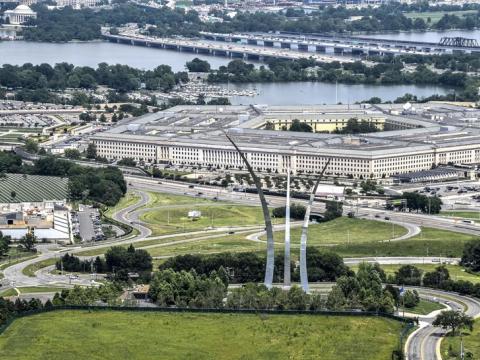DISA Adds Mission Owners to Edge Cloud Environment
One year after the Defense Information Systems Agency (DISA) launched the Joint Operational Edge (JOE), the agency is in the process of onboarding the first group of mission owners and deploying this hybrid cloud environment to other theaters around the globe.
SIGNAL Media sat down with Matthew Quinn, JOE product owner at DISA, for a one-year update.
JOE, is a DISA-managed commercial cloud hosted outside of the continental United States that provides the Department of Defense (DoD) access to commercial cloud services at the operational edge. JOE directly supports the DISA Next Strategy, a strategic framework that identifies capabilities and goals for the next few years. By 2030, DISA wants to operate a resilient, globally accessible hybrid cloud, and JOE is directly supporting that.
“In the DoD CIO’s OCONUS [outside the continental United States] cloud strategy, there are three tiers,” Quinn explained. "There’s the top tier, which is strategic, the middle tier of operational, and then the bottom tier, tactical.”
The strategic tier refers to the large continental U.S. regions, things like traditional hosting that happens inside of the United States. The tactical tier “is where we’re putting things in backpacks or on vehicles, very transportable, but not as much power,” Quinn added.
JOE is the middle ground.
“It’s meant to be that larger fixed facility-type footprint with multiple racks so that more processing can be done closer to the edge and making it easier to better capitalize on our networks and our resources, both real estate, personnel and just the overarching global network and how we deploy and fight," Quinn said.
DISA has two JOE nodes set up in the United States Indo-Pacific Command theater today, and they’re working with the combatant commands and the DoD CIO to expand over the next 12 to 18 months to include theaters around the world.
Shortly before leaving his position as DoD CIO, John Sherman told SIGNAL Media that JOE is like "a lily pad" to get from the continental United States back to the very tactical edge in the western Pacific, and "to reach all the way back to the continental United States, you've got to have something like a JOE cloud."
The JOE initiative is a team effort; the DoD CIO’s office provides DISA with strategic direction and sponsorship for JOE. As the nation’s premier information technology combat support agency, DISA takes that vision and transforms it into a joint capability for the department.
“When it comes to the [combatant commands] and the other mission owners, we’re actively engaged with them and the theater commanders, like the USINDOPACOM [United States Indo-Pacific Command], to ensure that we're providing a footprint and capabilities that meet their needs," Quinn said.
In December 2022, the DoD announced the Joint Warfighting Cloud Capability (JWCC) procurement. The JWCC is a multiple-award contract vehicle that provides the DoD the opportunity to acquire commercial cloud capabilities and services directly from the commercial cloud service providers. JOE purchases its edge cloud services off the JWCC contract vehicle, “so we’re regularly working with that PMO [project management office] to ensure that you’ve got the services on catalog and available, and that they’re going to meet the department’s needs,” Quinn said.
Quinn suggested that adding mission owners will provide valuable lessons.
“We’re getting to that point where we’re starting to realize and see how well this is going to work, how well it’s going to scale, and making sure that the things that we’ve implemented are meeting the needs of the department out there," he said. “We've got a number of different mission partners that we're actively onboarding, so we're always looking for more feedback.”
Some of the biggest challenges revolved around how to adopt and adapt commercial capabilities to meet the department’s mission.
“Some of these were meant to be single-tenant solutions, so one customer, one device. We're actually finding out how we can carve those devices into multiple tendencies to allow for more efficient use of the physical infrastructure and real estate and the compute,” Quinn said.
High-performance processing capabilities will likely remain in the continental United States.
“If you have something that requires really high performance processing, most likely that piece will live in CONUS [continental United States], but we can get some of that processing closer to the edge, and so being able to leverage it locally can reduce some of the impacts on the network bandwidth," Quinn said. "It can help commanders in the field get answers a little bit faster, and so really making sure that they're designing solutions that can take advantage of the full breadth of our infrastructure investments.”
Quinn noted the need to collaborate with industry.
“What we need from industry is when they’re proposing or designing their solutions to really make sure they give it the due thought and consideration on how this works in the distributed, global types of deployment, so that we can leverage these infrastructure resources that are getting closer to the edge and still provide both tactical, operational and strategic pictures and support along that way," he said.
As for next steps, the team will defer to the goal of DISA’s Next Strategy to provide that resilient, globally accessible hybrid cloud environment.
“We want to partner. We want to make sure that we're providing capabilities that make a difference,” Quinn said.
Anyone interested can visit https://www.hacc.mil/About-Us/ to contact Quinn and his team.
“We'll be sure to get back to them and talk about their requirements and how we can support them," Quinn added. "We're coming to a theater near them soon."





Comments